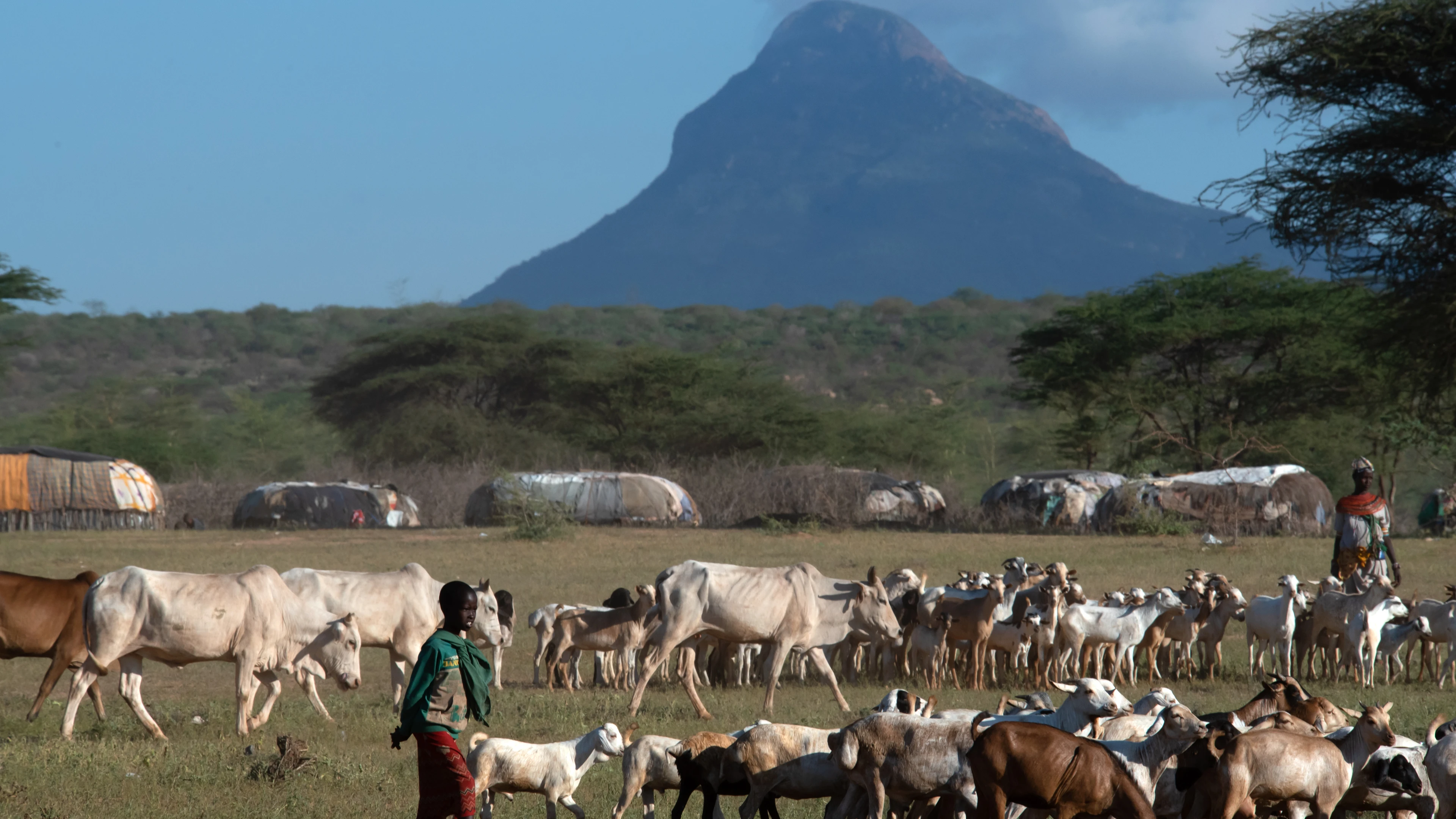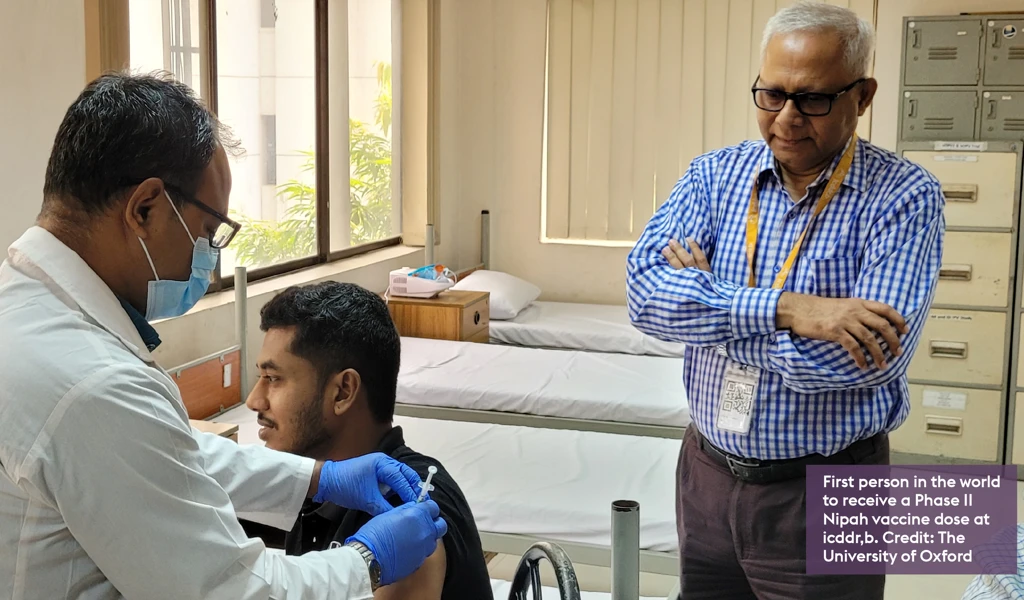NAIROBI/KAMPALA/MOSHI/OSLO, 21 AUG—Global disease experts are joining forces in two major collaborative projects to strengthen scientific understanding of the potentially deadly Rift Valley fever virus and its disease impact across Africa. Led by institutions in Kenya and Tanzania the research will help guide the planning of future clinical trials assessing much-needed human Rift Valley fever vaccine candidates.
Rift Valley fever is a mosquito-borne illness that can affect both livestock and people. It was first identified in East Africa’s Rift Valley in 1930 and has continued to cause major outbreaks both in the region and further afield, affecting people’s health, food security and livelihoods.
Despite being recognised as a priority disease in need of urgent R&D by both the World Health Organization, and Africa Centres for Disease Control and Prevention, the burden of Rift Valley fever is poorly characterised and transmission of the disease between outbreaks is not well understood.
The two new epidemiology and computational modelling projects, known as RVF-VETS led by Washington State University - Global Health in Kenya and the REMIT project led by the Kilimanjaro Clinical Research Institute in Tanzania, will assess the extent of Rift Valley fever’s impact across Africa. The projects are supported by a combined total of up to $9.6 million awarded by the Coalition for Epidemic Preparedness Innovations (CEPI) and include partners from The Gambia, New Zealand, South Africa, Uganda, United Kingdom and the United States.
Findings will help forecast the number of expected human Rift Valley fever illnesses in Africa today and in the future. This information is crucial for vaccine development because large-scale clinical trials to assess the efficacy of vaccines are only feasible when the virus is circulating.
Vaccine efficacy trials involve thousands of participants and are typically one of the final steps before licensure of a vaccine. However, without better knowledge about where Rift Valley fever occurs, who it affects and how the disease manifests, research bodies like CEPI are unable to plan whether an efficacy study can demonstrate how well a vaccine works.
“This groundbreaking research will shed new light on a disease that has been neglected for far too long. The learnings will tell us whether large-scale vaccine efficacy trials are feasible, where they should take place, and how long they are expected to take.” explains Dr Kent Kester, Executive Director of Vaccine Research & Development at CEPI. “And if the research finds that cases of Rift Valley fever in the region are too infrequent or sporadic to conduct an efficacy trial, we’ll know we need to focus on alternative pathways to licensing a human Rift Valley fever vaccine.”
Knowing the number of Rift Valley fever cases and likely locations with high infection rates can also help policy makers and vaccine developers better estimate demand for Rift Valley fever vaccines in the future. Findings could also inform our understanding of how other important viruses in the same viral family as Rift Valley fever are spread.
Dr Kariuki Njenga, Professor at the Washington State University Paul G. Allen School for Global Animal Health, and a Senior Scientist at the WSU Global Health Program – Kenya, working as Principal Investigator of the RVF-VETS consortium, says “Working closely with Dr Barnabas Bakamutumaho of Uganda Virus Research Institute and colleagues from regional ministries of health our recent studies in the East Africa region identified a Rift Valley fever hyperendemic region in Southwestern Uganda characterised by atypical sustained weekly detection of acute human Rift Valley fever cases at local hospitals for almost two years. Preliminary epidemiologic and modelling evidence points at climatic variations, among other factors, as being responsible for emergence of such location with high disease activity; locations that may be ideal for a vaccine efficacy trial.”
Professor Blandina Mmbaga, Director of Kilimanjaro Clinical Research Institute, working as Principal Investigator of the REMIT project, says “We are very excited to lead this international consortium that brings together expertise from human and animal health, vector biology and social sciences, and builds on preliminary work that we have carried out on the epidemiology and modelling of Rift Valley fever in eastern, southern and west Africa. The project will not only generate important information for the design of future human vaccine trials but will also help us understand how best to integrate human vaccination with other measures for effective control of the disease.”
Both groups will take a ‘One Health’ approach, combining historical and current data to better understand how Rift Valley fever virus spreads in the environment and in animal populations, and potential spillover into people. The teams will also look at who and where is most at risk of disease, and consider factors such as the changing movement of livestock and extreme weather events that are thought to be expanding the disease’s range and frequency of outbreaks.
In line with CEPI’s Equitable Access Policy, the research consortiums will publish their findings in open-access publications for the benefit of the global scientific community. Data informing the analysis tools and early warning systems for Rift Valley fever outbreaks developed as part of the projects will be made available open-access on project completion.
ENDS
Notes to Editors
Consortium members of the research led by Washington State University Global Health University in Kenya, known as the Rift Valley fever vaccine efficacy trial studies (RVF-VETS) in East Africa project, include:
- International Livestock Research Institute (ILRI), Kenya
- Uganda Virus Research Institute (UVRI, Uganda
- National Institute of Medical Research (NIMR), Tanzania
- Kenya Medical Research Institute/Wellcome Trust, Kenya
- University of Idaho, USA
- University of Oxford, UK
- Washington State University, US
The RVF-VETS project will receive up to $6.2 million funding from CEPI.
The project will input data reporting on the number infections in livestock and people in East Africa into a computer model alongside information on predicted climate variations in the region. The project aims to predict the location of Rift Valley fever outbreak hotspots across Kenya, Tanzania and Uganda—countries already with a known high burden of Rift Valley fever cases. – which may be suitable sites for a vaccine efficacy study.
Consortium members of the research led by Kilimanjaro Clinical Research Institute, known as the Rift Valley Fever Epidemiology and Modelling to Inform Vaccine Efficacy Trials (REMIT) project, include:
- University of Glasgow, UK
- University of Otago, New Zealand
- Tanzania Veterinary Laboratory Agency, Tanzania
- University of Pretoria, South Africa
- National Institute for Communicable Diseases, South Africa
- MRC The Gambia, The Gambia
- One Health Research Consulting, USA
- Ifakara Health Institute, Tanzania
- Washington State University, USA
- Global Health Tanzania, Tanzania
The REMIT project will receive up to $3.4 million funding from CEPI.
The project will incorporate additional datasets from South and West Africa into their work. By combining a range of data from the wider continent and building on dynamic and spatial models of Rift Valley fever, the researchers aim to predict where, when and how frequently human Rift Valley fever cases may occur across Africa as a whole. The team will also examine whether reports of livestock affected with Rift Valley fever could act as an early warning system for new human outbreaks and will explore people’s perceptions and attitudes to Rift Valley fever vaccination.
Given the complex nature of Rift Valley fever transmission, both projects will take a One Health approach to their work, recognising that the health of people, livestock, wildlife and climate are closely linked and interdependent. The projects will run for a two-year period.
The REMIT project will be supported by the the Director for Preventive Services (DPS) within the Ministry of Health and the Director for Veterinary Services (DVS) within the Ministry of Livestock within the Government of Tanzania. The expected results will contribute to the Tanzanian Government’s effort towards Rift Valley fever and other priority disease eradication in the country.
About Rift Valley fever
Rift Valley fever is a mosquito-borne viral illness of humans and livestock, including cattle, sheep, camels and goats. It was first discovered in Kenya’s Rift Valley in 1930, but in recent decades has been detected in many African countries and parts of the Middle East. Because of its impact on both people and animals, Rift Valley fever has profound human health impacts – affecting both lives and livelihoods directly. Rift Valley fever is recognised as a priority disease by the World Health Organization, Africa CDC and World Animal Health Organisation (WOAH).Outbreaks of Rift Valley fever have been consistently linked with intense periods of rainfall and flooding, including those caused by the El Niño phenomenon. Heavy rain provides ideal conditions for Rift Valley fever and promotes infected mosquito breeding and hatching.
Although vaccines against Rift Valley fever have been registered for animals, no vaccines are currently available or licensed for human use. CEPI first invested in the development of human Rift Valley fever vaccines, with funding support from the European Union Horizon programmes, in 2019. CEPI is now supporting four diverse human Rift Valley fever vaccine candidates.
As climate change persists, expanding the range of mosquitoes and increasing the likelihood of extreme weather events such as flooding, there is a risk that Rift Valley fever outbreaks will become more frequent and widespread making a protective human vaccine all the more urgent.
About CEPI
CEPI is an innovative partnership between public, private, philanthropic and civil organisations. Its mission is to accelerate the development of vaccines and other biologic countermeasures against epidemic and pandemic threats so they can be accessible to all people in need. CEPI has supported the development of more than 60 vaccine candidates or platform technologies against multiple known high-risk pathogens or a future Disease X. Central to CEPI’s pandemic-beating plan is the ‘100 Days Mission’ to compress the time taken to develop safe, effective, globally accessible vaccines against new threats to just 100 days.

.webp)


